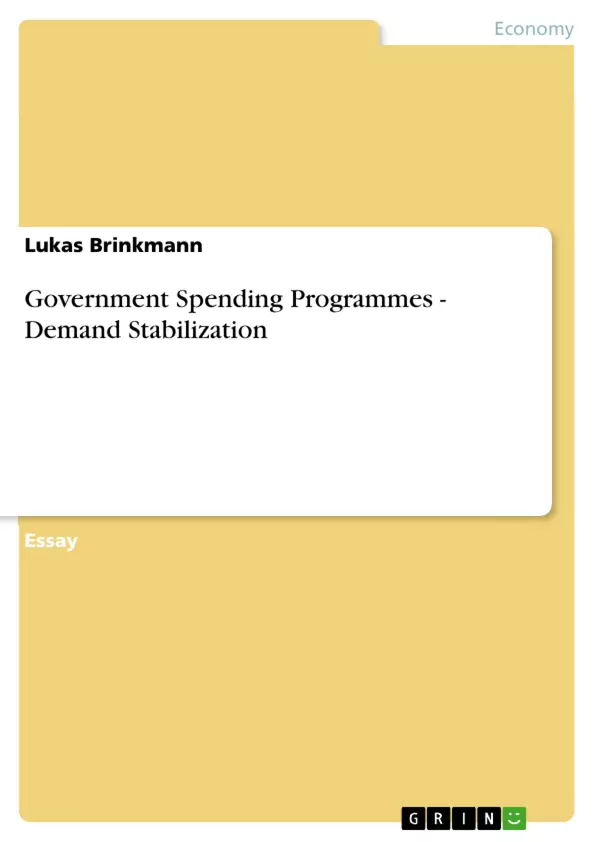1. Introduction
On the 5th of November 2008, Germany introduced its first government spending programme. The main purpose of this package was to actuate investments of companies, government, municipal governments and private households of about €50 billion. Moreover it was created to ensure further funding of companies.
As there were a lot of voices criticizing it as too little to fight against the current crisis combined with a further escalation of the crisis, the government decided to announce a second spending programme in January 2009. Main points of this stimulus package were fostering private consumption, governmental investments and financial aids for firms. Both two-year spending programmes are worth of €82 billion.
Inhaltsverzeichnis (Table of Contents)
- Introduction
- Most important elements of the stimulus packages
- Investments
- Tax reduction and premiums
- Write downs
- Family
- Labour
- Industry
- Debt brake
- Critical analysis
- Investments
- The German “Abwrackprämie”
- The “Loan and Debt Guarantee Program”
- State benefit for cut working hours
- Other measurements
Zielsetzung und Themenschwerpunkte (Objectives and Key Themes)
This text aims to analyze the government spending programs implemented by Germany in 2008 and 2009 to combat the economic downturn. The analysis focuses on the effectiveness of the program's various measures and explores the potential long-term effects of these interventions.
- Government spending programs as a tool for demand stabilization
- Evaluation of the effectiveness of specific measures such as infrastructure investments, tax reductions, and industry support programs
- Analysis of the potential long-term impact of these measures on the economy
- Critical assessment of the "Abwrackprämie" (car scrappage scheme)
- Discussion of the debt brake and its implications for future economic policy
Zusammenfassung der Kapitel (Chapter Summaries)
Chapter 1: Introduction introduces the two government spending programs implemented in Germany during the 2008-2009 economic crisis. It outlines the main objectives of these programs, which were to stimulate investment and support businesses and individuals affected by the recession.
Chapter 2: Most important elements of the stimulus packages details the specific components of the spending programs. This includes investments in infrastructure, tax reductions, subsidies for families, support for industries like the car industry, and provisions for employee benefits.
Chapter 3: Critical analysis provides a critical evaluation of the various measures implemented in the spending programs. The author examines the potential benefits and drawbacks of each measure, highlighting concerns regarding effectiveness, unintended consequences, and long-term implications.
Schlüsselwörter (Keywords)
The text focuses on the key concepts of government spending programs, demand stabilization, economic crisis, infrastructure investment, tax reductions, industry support, car scrappage scheme, debt brake, and long-term economic implications.
- Arbeit zitieren
- Bachelor of Arts Lukas Brinkmann (Autor:in), 2009, Government Spending Programmes - Demand Stabilization, München, GRIN Verlag, https://www.hausarbeiten.de/document/168111


